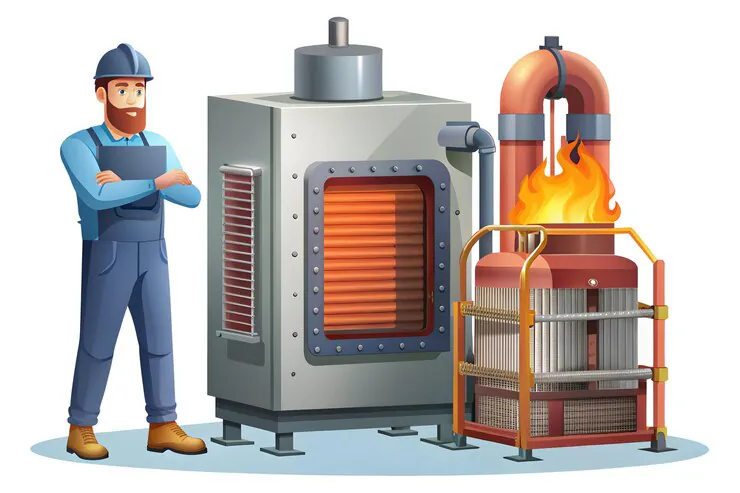Gas furnaces are the heart of a home’s heating system, providing warmth and comfort during the coldest months of the year. To ensure your gas furnace operates efficiently and lasts for many years, regular maintenance is essential. In this blog, we’ll explore key maintenance tips for gas furnaces that will help you maximize performance, enhance energy efficiency, and extend the lifespan of your system.
1. Regularly Replace or Clean the Air Filter
The air filter in your gas furnace plays a crucial role in maintaining indoor air quality and system efficiency. Over time, the filter can become clogged with dust, dirt, and other debris. A clogged filter restricts airflow, forcing the furnace to work harder and potentially causing overheating or premature wear.
Tip: Check the air filter every 1-2 months during the heating season. If it appears dirty or clogged, replace it with a new one. Most filters should be replaced every 3-6 months, but this can vary based on the type of filter and the level of dust in your home.
2. Inspect and Clean the Burner
The burners in your gas furnace are responsible for igniting the gas and generating heat. Over time, burners can accumulate dirt and debris, which can affect their performance and efficiency.
Tip: Have a professional inspect and clean the burners annually. They will ensure that the burners are properly adjusted and free of obstructions, which helps maintain optimal combustion and heat output.
3. Check the Thermostat
Your thermostat controls the temperature in your home by regulating when the furnace turns on and off. If the thermostat isn’t functioning correctly, it can lead to inconsistent temperatures and increased energy bills.
Tip: Test your thermostat before the heating season begins. Ensure that it accurately reflects the room temperature and responds appropriately to temperature changes. If you notice any issues, consider recalibrating or replacing the thermostat.
4. Inspect and Clean the Flue and Venting System
The flue and venting system are essential for safely expelling combustion gases from your furnace to the outside. Blockages or leaks in the flue can lead to dangerous carbon monoxide buildup and decreased efficiency.
Tip: Have a professional inspect the flue and venting system annually. They will check for any obstructions, leaks, or signs of deterioration and ensure that the system is functioning correctly.
5. Lubricate Moving Parts
Gas furnaces have several moving parts, such as the blower motor and fan, which require proper lubrication to operate smoothly. Lack of lubrication can lead to increased friction, noise, and wear on these components.
Tip: Lubricate the moving parts of your furnace as recommended by the manufacturer. This is typically done during the annual maintenance visit by a professional technician.
6. Check the Heat Exchanger
The heat exchanger is a critical component of your furnace that transfers heat from the combustion gases to the air circulating through your home. A cracked or damaged heat exchanger can lead to carbon monoxide leaks and decreased heating efficiency.
Tip: Have a professional inspect the heat exchanger annually. They will check for any signs of cracks or damage and ensure that the heat exchanger is functioning properly.
7. Ensure Proper Airflow
Adequate airflow is essential for efficient furnace operation. Obstructed or closed vents can reduce the effectiveness of your heating system and lead to uneven heating in your home.
Tip: Check that all vents and registers are open and unobstructed. Ensure that furniture or other objects are not blocking the airflow. Additionally, verify that the return air ducts are free of obstructions.
8. Test the Furnace’s Safety Features
Gas furnaces are equipped with safety features, such as the limit switch and flame sensor, to protect against malfunctions and ensure safe operation. Regular testing of these features can prevent potential issues and ensure that the furnace operates safely.
Tip: Test the furnace’s safety features during your annual maintenance visit. A professional technician will check the limit switch, flame sensor, and other safety components to ensure they are functioning correctly.
9. Inspect the Ductwork
The ductwork in your home carries the heated air from the furnace to different rooms. Leaks or damage in the ductwork can result in energy loss and reduced heating efficiency.
Tip: Inspect the ductwork periodically for signs of damage, such as disconnected sections or holes. Seal any leaks with duct tape or mastic and ensure that the ductwork is properly insulated.
10. Schedule Annual Professional Maintenance
While there are many maintenance tasks you can perform yourself, it’s essential to schedule annual professional maintenance for your gas furnace. A qualified technician can perform a thorough inspection, identify potential issues, and make necessary repairs to keep your system running smoothly.
Tip: Schedule a professional maintenance visit before the heating season begins. This will ensure that your furnace is ready to perform efficiently and reliably throughout the winter months.



0 Comments